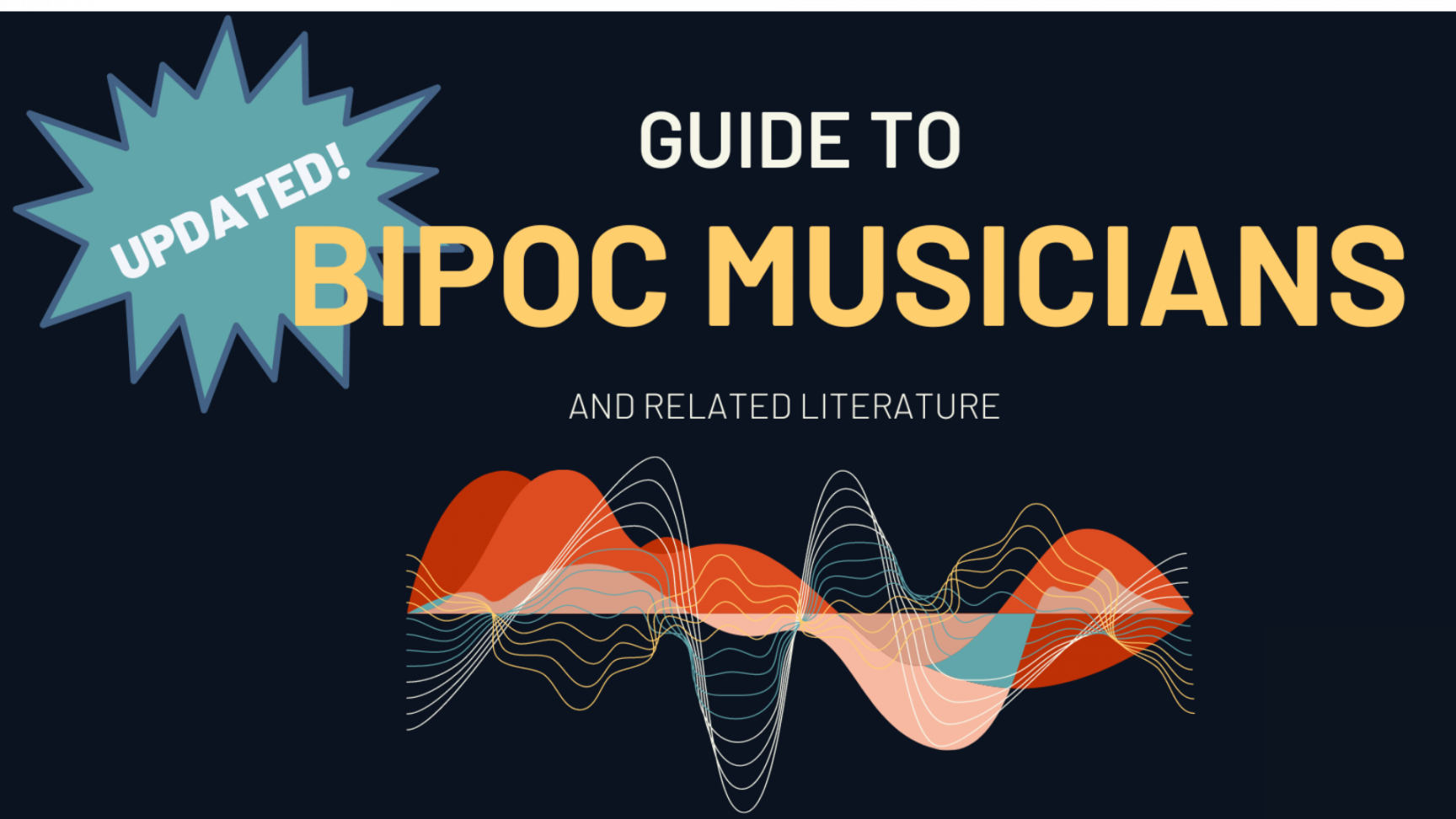Spring is (almost) upon us and with it comes a substantial update to the Music Library’s Guide to BIPOC Musicians and Related Literature! The guide was first created in 2020 by Instruction Librarian Tim Neufeldt and Graduate Student Library Assistant (GSLA) Tegan Niziol as response to the University of Toronto’s Faculty of Music Call to Action, which highlighted the difficulty of finding BIPOC materials in our catalogue. The library guide was created to address this shortcoming by making BIPOC-related materials easily findable by library users.

In the short time that I have been working at the Music Library there has been an increasing number of students looking to perform repertoire by diverse composers, but the way that the library catalogue is set makes it difficult to search for diverse repertoire without already knowing what you’re looking for. With a search engine like Google you can type in “BIPOC composer repertoire for high voice” and get lots of results, but if you type that into the Library Search you might get a handful of hits, most of which are academic articles (not ideal when you’re looking for rep).
The music community is creating more and more online resources that centre around inclusivity. Some are beautiful databases and websites, while others are crowd-sourced excel spreadsheets. Because these resources are so widespread, it takes lot of legwork to gather them all, and I have found that most people simply don’t know what is available to them.
The goal with the latest update to the library’s Guide to BIPOC Musicians and Related Literature was to create a curated resource that performers and researchers could use to find diverse repertoire based on their instrument or ensemble type, rather than providing a general list of BIPOC composers and their works. I know firsthand how frustrating it can be to find pieces written for your instrument or ensemble from just a list of composers, and this frustration can be a major deterrent when seeking information, which can ultimately result in giving up.
To streamline this process, the library guide now has a designated repertoire section, with resources to help users find pieces by underrepresented composers organized according to instrument and ensemble type. Prior to the update, the guide only featured a selection of scores by BIPOC composers that are physically available in the library. This section is still there, and while not representative of everything we have available, has been updated to reflect our latest acquisitions. The new web resources tab includes over 40 websites and databases, compiled in one convenient location for those seeking diverse repertoire. Once you have found a suitable piece of music, all you have to do is look it up in the Music Library catalogue. If we do not have it, you can request it through inter-library loan or suggest a purchase.
In addition to the repertoire resources, updates have been made to our highlighted features, reference and research resources available through the library, tips for how to search the library catalogue, and a list of websites and other resources to learn about music and diversity. Worried about how to write about BIPOC musical traditions from a position of anti-racism? We also have a page of style guides help you find conscious and considerate language to express your ideas.
While completing this update I have learned a lot about the information needs of the U of T music community. It has also been really amazing to see just how many diverse composers there are, both historical and contemporary, that have written such amazing music. There really is so much more than what you learn about in a traditional Euro-centric music history or theory course!
In the future I hope to see this guide expand to offer similar representation for other diverse voices (whether in this guide or another). As part of that expansion my hope is that we will provide teaching resources to help music professors continue to diversify their teaching. In the updated reference works section, we have included a few teaching resources, and there are early music examples, music theory examples under websites and other resources, but it would be great to offer more pedagogical resources. Lastly, I would love to see this guide become more collaborative. We have had a few people reach out with resources that can be added, including a spreadsheet created by the FMUA to examine which pieces are currently available through the Music Library. Suggesting purchases, resources, or giving feedback are ways to help us shape the collection according to what the community needs.
It takes a lot of work to update such a massive resource, and it is still by no means comprehensive—I have found a few more resources while writing this. However, the guide is a living document. Nothing is set in stone; there is always space to grow, re-evaluate, and make the changes necessary to ensure that the guide is best suited to serve the needs of the University of Toronto music community in its commitment to furthering equity, diversity, inclusion, and belonging.